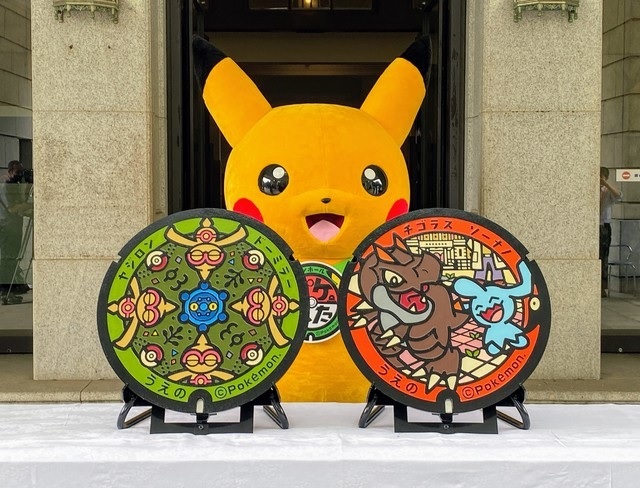
Pokéfuta are waiting for fans outside two of Japan’s best museums.
Tokyo’s Ueno Park is one of the city’s biggest tourism draws, and it’s actually several attractions in one. In addition to its shady cherry blossom tree-lined pathways and beautiful lotus pond, the park is home to multiple museums and a zoo, and now it’s added even more attractions with a pair of brand-new Pokémon manhole covers!
These are the first-ever Pokémon manhole covers, or Pokéfuta, as they’re called in Japanese, to be installed in central Tokyo, and none other than Pikachu himself was on-site for a special ceremony prior to their June 14 installation.
Appearing on the first of the two covers is Tyrunt, the Tyrannosaurus-like Pokémon who Trainers can resurrect from a fossil in the Pokémon. Appropriately, the Tyrunt Pokéfuta, which also features Wynaut, is found in Ueno Park near the entrance to the National Museum of Nature and Science, which has an impressive collection of dinosaur fossils itself.
▼ The Tyrunt/Wynaut Pokéfuta is found not far from the museum’s full-scale blue whale replica statue.
Meanwhile, Ueno’s other Pokémon manhole cover stars Baltoy, whose design is inspired by Japan’s traditional earthenware dogu figures from the late Jomon period (c. 1000 BC), and Bronzor, a mysterious steel/psychic-type found in tombs, according to Pokémon lore.
▼ Dogu
Because of Dogu and Bronzor’s connections to ancient civilizations, their Pokéfuta has been placed near the main gate of the park’s Tokyo National Museum, whose extensive collection of artistic antiquities includes dogu.
▼ Both Pokéfuta are in public areas of the park, so you don’t need to purchase a museum admission ticket to see them.
▼ Pikachu was joined at the pre-installation ceremony by the vice-directors of both museums.
As the first Pokéfuta in Tokyo’s 23 central wards (the capital’s others are out in the suburbs or a town that’s 24-hour boat ride from downtown that’s still technically part of Tokyo), the two new covers are sure to get plenty of visitors Thankfully, the Pokéfuta are permanent installations, so there’s no rush to see them if a trip to Tokyo isn’t in your immediate travel plans, and if you end up having to wait until next spring you’ll be just in time to also see the full-size Pokémon skeletons at the special exhibit coming to the National Museum of Nature and Science.
Sources: PR Times (1, 2)
Top image: PR Times
Insert images: PR Times (1, 2), Wikipedia/Saigen Jiro
● Want to hear about SoraNews24’s latest articles as soon as they’re published? Follow us on Facebook and Twitter!


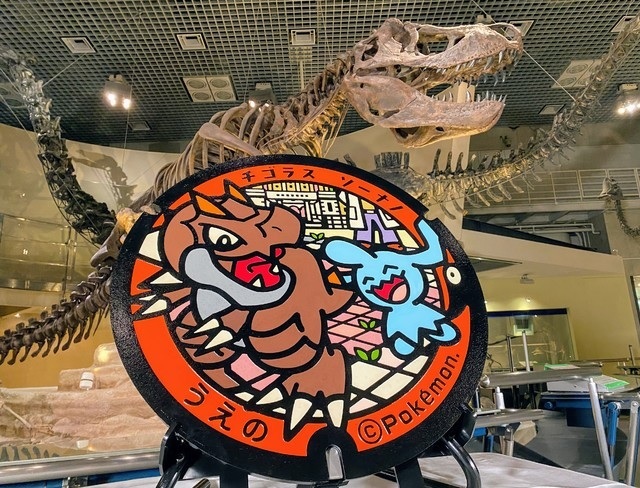
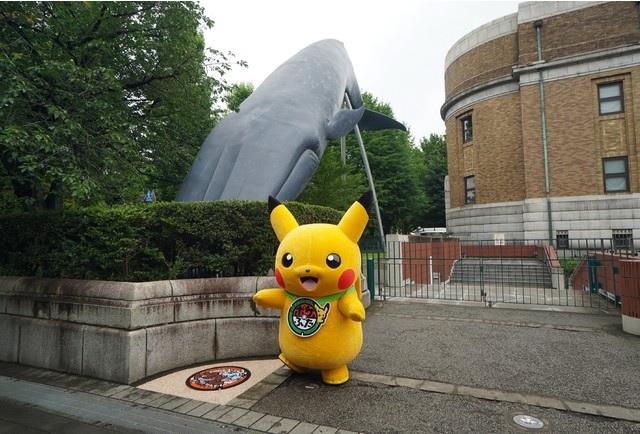
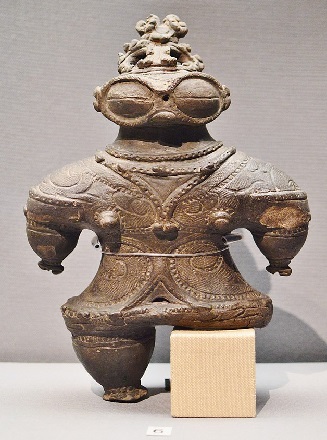

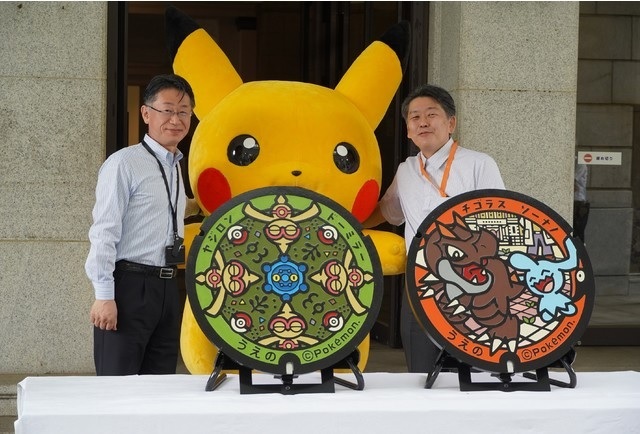
 Pokémon manhole covers finally come to Tokyo with awesome Gen-1 designs【Photos】
Pokémon manhole covers finally come to Tokyo with awesome Gen-1 designs【Photos】 Pikachu/Game Boy manhole cover installed at Nintendo Museum, not viewable by general public
Pikachu/Game Boy manhole cover installed at Nintendo Museum, not viewable by general public Pokémon manhole covers come to Fukuoka with eight species appearing in Kitakyushu
Pokémon manhole covers come to Fukuoka with eight species appearing in Kitakyushu Kinki Gyarados! Japan’s central region gets its first Pokémon manhole covers
Kinki Gyarados! Japan’s central region gets its first Pokémon manhole covers Osaka finally gets its own Pokémon manhole covers with team of Electric/Steel-types
Osaka finally gets its own Pokémon manhole covers with team of Electric/Steel-types Things get heavy with the Gold Lucky Bag from Village Vanguard
Things get heavy with the Gold Lucky Bag from Village Vanguard Top Japanese cosplayer Enako returns to Comiket after 6 years, creates mayhem with admirers
Top Japanese cosplayer Enako returns to Comiket after 6 years, creates mayhem with admirers Nearly one in ten young adults living in Japan isn’t ethnically Japanese, statistics show
Nearly one in ten young adults living in Japan isn’t ethnically Japanese, statistics show The Purple Lucky Bag from Village Vanguard is an extra-large waste of money
The Purple Lucky Bag from Village Vanguard is an extra-large waste of money Private booths are coming to Japan’s Shinkansen bullet trains even sooner than we’d thought【Video】
Private booths are coming to Japan’s Shinkansen bullet trains even sooner than we’d thought【Video】 Starbucks Japan ready to get Year of the Horse started with adorable drinkware and plushies【Pics】
Starbucks Japan ready to get Year of the Horse started with adorable drinkware and plushies【Pics】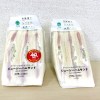 Japanese convenience store fools us with its 40-percent-more sandwich, but in a good way
Japanese convenience store fools us with its 40-percent-more sandwich, but in a good way The 10 best day trips from downtown Tokyo【Survey】
The 10 best day trips from downtown Tokyo【Survey】 Japan’s Self-Defense Forces take “radio calisthenics” to an interesting new level
Japan’s Self-Defense Forces take “radio calisthenics” to an interesting new level Collect ’em all! New Pokéfuta accessories now available at Village Vanguard
Collect ’em all! New Pokéfuta accessories now available at Village Vanguard Japanese beef bowl chain Sukiya’s 2026 Smile Box lucky bag basically pays for itself
Japanese beef bowl chain Sukiya’s 2026 Smile Box lucky bag basically pays for itself Hayao Miyazaki says Happy New Year to Studio Ghibli fans with new art for Year of the Horse
Hayao Miyazaki says Happy New Year to Studio Ghibli fans with new art for Year of the Horse Cup Noodle tries an authentic Jiro-style ramen, but something’s not quite right
Cup Noodle tries an authentic Jiro-style ramen, but something’s not quite right The best Starbucks Japan Frappuccinos we want to drink again in 2026
The best Starbucks Japan Frappuccinos we want to drink again in 2026 We revisited Sweets Paradise after a decade to see if Japan’s dessert buffet still delivers
We revisited Sweets Paradise after a decade to see if Japan’s dessert buffet still delivers That time Seiji called JASRAC to ask why he didn’t get paid royalties for his song being on TV
That time Seiji called JASRAC to ask why he didn’t get paid royalties for his song being on TV We found possibly the quietest Japanese-style hotel in Tokyo’s bustling Shinjuku district
We found possibly the quietest Japanese-style hotel in Tokyo’s bustling Shinjuku district Pizza Hut Japan’s hot lucky bags are perfect for a New Year’s pizza party
Pizza Hut Japan’s hot lucky bags are perfect for a New Year’s pizza party Japan’s oldest largetooth sawfish in captivity back on display in Mie Prefecture
Japan’s oldest largetooth sawfish in captivity back on display in Mie Prefecture 7-Eleven Japan starts new temporary luggage storage service in over 300 branches
7-Eleven Japan starts new temporary luggage storage service in over 300 branches Disillusionment at Tsukiji’s tourist-target prices led us to a great ramen restaurant in Tokyo
Disillusionment at Tsukiji’s tourist-target prices led us to a great ramen restaurant in Tokyo Starbucks teams up with 166-year-old Kyoto doll maker for Year of the Horse decorations【Photos】
Starbucks teams up with 166-year-old Kyoto doll maker for Year of the Horse decorations【Photos】 Tokyo considering law requiring more trash cans following litter increase in heavily touristed area
Tokyo considering law requiring more trash cans following litter increase in heavily touristed area Tokyo’s Tsukiji sushi neighborhood asks tour groups to stay away for the rest of the month
Tokyo’s Tsukiji sushi neighborhood asks tour groups to stay away for the rest of the month Tokyo event lets you travel back in time, for free, to celebrate 100 years since Showa era start
Tokyo event lets you travel back in time, for free, to celebrate 100 years since Showa era start Japan may add Japanese language proficiency, lifestyle classes to permanent foreign resident requirements
Japan may add Japanese language proficiency, lifestyle classes to permanent foreign resident requirements Sanrio theme park in Japan announces plans to expand into a Sanrio resort
Sanrio theme park in Japan announces plans to expand into a Sanrio resort Stamina-destroying “Paralysis Noodles” are Tokyo’s newest over-the-top ramen innovation
Stamina-destroying “Paralysis Noodles” are Tokyo’s newest over-the-top ramen innovation Survey asks foreign tourists what bothered them in Japan, more than half gave same answer
Survey asks foreign tourists what bothered them in Japan, more than half gave same answer Japan’s human washing machines will go on sale to general public, demos to be held in Tokyo
Japan’s human washing machines will go on sale to general public, demos to be held in Tokyo Japan’s deadliest food claims more victims, but why do people keep eating it for New Year’s?
Japan’s deadliest food claims more victims, but why do people keep eating it for New Year’s? We deeply regret going into this tunnel on our walk in the mountains of Japan
We deeply regret going into this tunnel on our walk in the mountains of Japan Studio Ghibli releases Kodama forest spirits from Princess Mononoke to light up your home
Studio Ghibli releases Kodama forest spirits from Princess Mononoke to light up your home Major Japanese hotel chain says reservations via overseas booking sites may not be valid
Major Japanese hotel chain says reservations via overseas booking sites may not be valid Put sesame oil in your coffee? Japanese maker says it’s the best way to start your day【Taste test】
Put sesame oil in your coffee? Japanese maker says it’s the best way to start your day【Taste test】 No more using real katana for tourism activities, Japan’s National Police Agency says
No more using real katana for tourism activities, Japan’s National Police Agency says Starbucks Japan reveals new sakura drinkware collection, inspired by evening cherry blossoms
Starbucks Japan reveals new sakura drinkware collection, inspired by evening cherry blossoms Updated cherry blossom forecast shows extra-long sakura season for Japan this year
Updated cherry blossom forecast shows extra-long sakura season for Japan this year Pokémon manhole covers spreading with eight new Pokéfuta in Miyazaki
Pokémon manhole covers spreading with eight new Pokéfuta in Miyazaki Pokémon come to real-life Johto region with new Pokémon manhole covers for Nara【Pics】
Pokémon come to real-life Johto region with new Pokémon manhole covers for Nara【Pics】 New Pokémon manhole covers starring Chansey are set to bring good luck to Fukushima
New Pokémon manhole covers starring Chansey are set to bring good luck to Fukushima Brand-new Pokémon manhole covers have Sandshrew welcoming you to an often forgotten part of Japan
Brand-new Pokémon manhole covers have Sandshrew welcoming you to an often forgotten part of Japan Japan’s Pokémon manhole covers travel to you in new line of mugs, replicas, and other merch【Pics】
Japan’s Pokémon manhole covers travel to you in new line of mugs, replicas, and other merch【Pics】 Saitama Prefecture scores its first Pokémon manhole covers in Tokorozawa City
Saitama Prefecture scores its first Pokémon manhole covers in Tokorozawa City Brand-new Pikachu manhole covers coming to Japanese city to celebrate Pokémon World Championships
Brand-new Pikachu manhole covers coming to Japanese city to celebrate Pokémon World Championships Two new Pokémon parks coming to Oshawott’s prefecture, plus new Pokémon manhole covers【Video】
Two new Pokémon parks coming to Oshawott’s prefecture, plus new Pokémon manhole covers【Video】 Pathetically weak Magikarp shown love with Pokémon manhole covers in birthplace of koi culture
Pathetically weak Magikarp shown love with Pokémon manhole covers in birthplace of koi culture Okayama prefecture to receive its first Pokémon-themed manhole covers【Pics】
Okayama prefecture to receive its first Pokémon-themed manhole covers【Pics】 Eight new Pokémon manhole covers featuring Vulpix spawn in snowy Hokkaido Prefecture
Eight new Pokémon manhole covers featuring Vulpix spawn in snowy Hokkaido Prefecture Kyoto now has Pokémon manhole covers as Generation 2 comes to the real-life Johto region
Kyoto now has Pokémon manhole covers as Generation 2 comes to the real-life Johto region Five new Pokémon manhole covers arrive in Tottori Prefecture, now with one in every municipality
Five new Pokémon manhole covers arrive in Tottori Prefecture, now with one in every municipality Pokémon manhole covers make their debut in Japan’s Aomori Prefecture
Pokémon manhole covers make their debut in Japan’s Aomori Prefecture Getting tired of Pokémon Go? Maybe visiting the Pokémon manhole covers will reignite your passion
Getting tired of Pokémon Go? Maybe visiting the Pokémon manhole covers will reignite your passion Here’s where to find all of Japan’s new Pikachu Pokémon manhole covers in Yokohama【Photos, maps】
Here’s where to find all of Japan’s new Pikachu Pokémon manhole covers in Yokohama【Photos, maps】
Leave a Reply